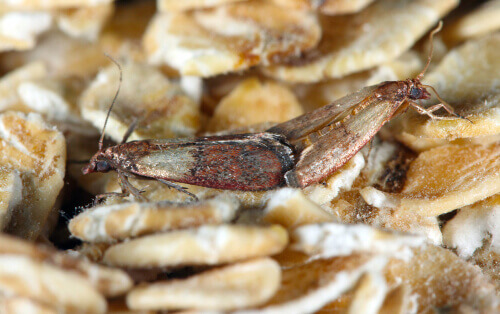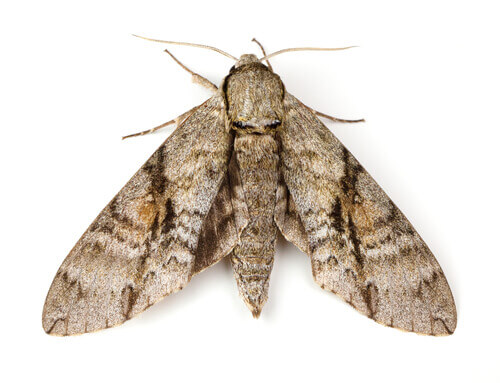Learn All About Moths


Written and verified by the lawyer Francisco María García
Moths are very common creatures. You can see them flying near closets and wardrobes. In fact, some even appear at night, as they’re nocturnal.
In your home, moths are responsible for those little holes in your clothes. Likewise, they usually appear in containers where you store flour or cereals. They sometimes make their homes in offices and places where there’s a lot of paper.
The reason for these unwanted situations is that moths, small butterfly-like creatures that seem harmless, are bothersome and can cause damage.
All about moths
What does zoology tell us about moths?
- They belong to the group of Lepidopteran insects. Their wings are covered with small scales.
- They’re invertebrates, meaning they don’t have a skeleton or backbone.
- The body of a moth is divided into three sections: head, thorax, and abdomen. In addition, they have six legs and two wings.
- They differ from butterflies in their antennae. While the antennae of butterflies are rigid in appearance, those of moths resemble feathers due to their filaments.
- The stages of the life cycle of moths are: egg, larva, pupa, and adult. Their reproduction is sexual and oviparous. An interesting fact is that some species lay up to 300 eggs.
- The life cycle of moths is short. These animals damage tissues, papers, and stored products.
Moths are usually nocturnal, avoid light, and thrive in dark places.

All about moths: what they eat
Regarding what these insects eat, we have to differentiate the following:
- Adult clothes moths don’t feed. The larvae are the ones that eat clothes, paper, flour, and other materials. In other words, when you see a moth flying it’s because it probably already ate everything.
- These animals prefer tissues of animal origin. Woolen coats, blankets, and rugs are their favorite foods. Nevertheless, they also devour duvets and ornaments made from natural materials. They don’t enjoy synthetic fabrics much. However, they do eat mixtures and tinctures.
- The moths that usually make their way into homes are those that base their diet on flour and cereals. They’re the ones that cake products and make the flour you store in your pantry look unpleasant.
- There’s a type of moth that eats wood; these moths pierce furniture and old wood. Antique furniture lovers know them well, and they detect them by the small holes they leave in the wood.
- Some species feed on the nectar of flowers and parts of fruits and plants. Generally, they inhabit gardens and contribute to pollination. These types of moths aren’t a nuisance, so you don’t need to fight against them.
- Professional farmers fight crop moths, which they consider pests. Their larvae deteriorate crops and don’t allow them to develop as they should.
- Recently, a type of moth that causes severe allergic reactions was detected. It’s black with lots of hairs on its body, which are the cause of health problems. You need to be careful when it comes to eliminating them. If you hit one with a shoe or another object, it’ll release its scales, which contain histamine, the cause of allergies.

How to prevent and fight harmful moths
As in all areas of life, better safe than sorry. What can you do to prevent moth infections in your home or business? There are several methods, which you can use on their own or together with others.
- Natural products. It’s a good idea to hang sachets of lavender flowers, lemon zest, cedar sticks, or cloves in your closets. They’re very aromatic products that repel moths. However, make sure they don’t touch your clothes, as they could stain them.
- Naphthalene and camphor. Historically, these have been the most-used element to fight these insects. Our ancestors were experts at putting mothballs and camphor in the pockets of coats and in the folds of folded clothing.
- Spraying the walls and ceilings of closets with vinegar is another good prevention method. It’s useful for your clothes and in the kitchen.
- Spray insecticides. You can find different types and brands on the market. They don’t stain and are harmless to health. They’re very good options, especially suitable for cracks and fissures.
You need to prevent moths from infesting your house or business because, once they settle in, they’re harder to get rid of.
This text is provided for informational purposes only and does not replace consultation with a professional. If in doubt, consult your specialist.